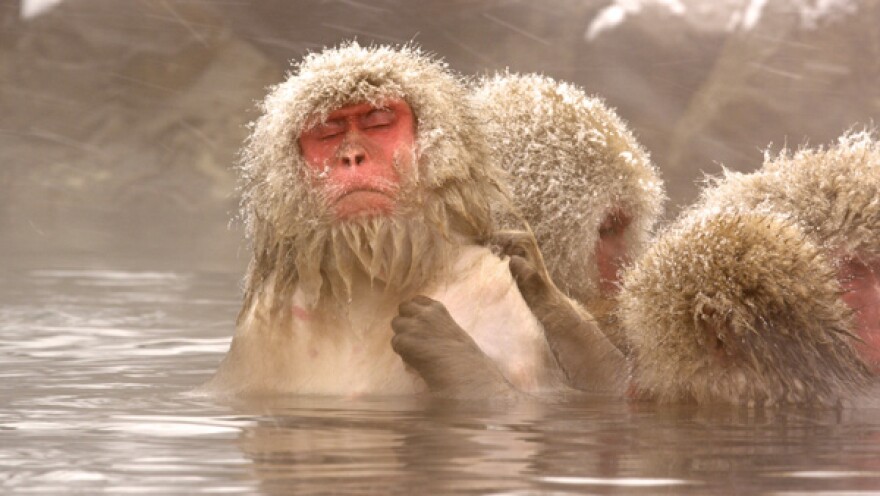In a place called Hell Valley, high in the Japanese Alps, a troop of snow monkeys clings together for warmth and support in the frigid mornings of early winter.
As descendants of an ancient tribe of macaques who journeyed farther north than any other primate except ourselves, they are well-adapted to the extremes of the seasons, but they are not impervious to the cold.
They get important help from the hot springs in the valley, fed by warm volcanic waters, but their survival is a communal effort in a complex society of rank and privilege where each knows their place.
Liam Neeson narrates this intimate look at the family life of macaques.
"Snow Monkeys" focuses on the social ins and outs of individuals within a 160-member troop led by Kuro-san, a young male still new to the job and something of a solitary grouch.
We meet mothers and babies, cousins and aunts, eccentrics and orphans, first lieutenants, juveniles learning their place in the group, and outsiders looking for mates.
They all have a role to play within the troop. But the story centers on one very young and low-ranking snow monkey called Hiro who reaches out to the reticent and lonely leader, forming a bond with him that manages over time to warm his less than sunny disposition.
It is a rare gesture that alters both their lives. Kuro-san finds new confidence as a leader; Hiro is allowed a position and perspective well above his birthright.
The cinematography in this NATURE documentary follows the troop through all four seasons.
The film begins in early winter and follows the troop through the difficulties and dangers the cold and snow present.
Brutal winter storms can last for days, and the snow monkeys have learned that survival depends on keeping friends and family close.
Spring produces fresh growth in the forest and new babies to care for and keep safe as their curiosity leads them in all directions.
Summer brings rain and flowers in full bloom, while cooler water in the hot springs turns them into perfect Summer swimming holes for energetic youngsters.
With the changing colors of Fall, the mating seasons arrives. Behavior is by turns edgy and aggressive or affectionate.
The entire troop forages, readying itself for the coming winter. They will face it knowing that they can rely on each other, whatever comes their way.
What’s On The Snow Monkey Menu
Japanese Macaques that inhabit Jigokudani or “Hell Valley” must stick to together and adapt to harsh weather to survive and thrive. When they’re not soaking in hot springs during chilly months, snow monkeys can often be found foraging to sustain a rather diverse, omnivorous diet – a diet that shifts depending on the season. View the infographic
WATCH ON YOUR SCHEDULE:
This episode of NATURE is available for streaming on demand.
CONNECT:
NATURE is on Facebook, Tumblr and you can follow @PBSNature on Twitter. #NaturePBS
CREDITS:
NATURE is a production of THIRTEEN Productions LLC for WNET. For NATURE, Fred Kaufman is executive producer. "Snow Monkeys" is a production of Pontecorvo Productions and THIRTEEN Productions LLC in association with National Geographic Channel, Sky Vision and WNET.













